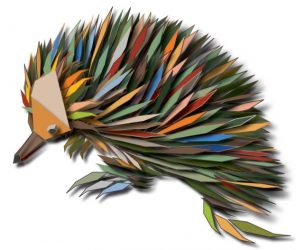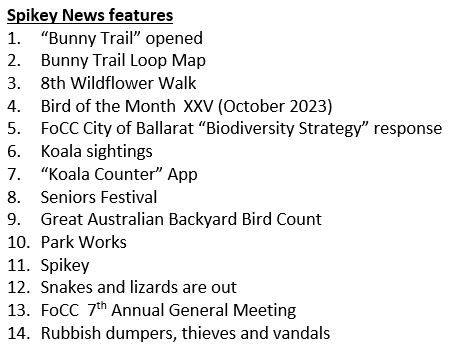- “Bunny Trail” opened
The Bunny Trail was opened on Tuesday 24th October 2023 by City of Ballarat Mayor Cr Des Hudson and Mt Clear College student Columbus Barton. A large crowd of local residents, cyclists’, walkers and Mt Clear College were present to celebrate the official opening. The opening is the culmination of four years’ hard work by the Friends and Mt Clear College students with support by the City of Ballarat, Community Bank Buninyong and Regional Development Victoria.




How it began
On October 30 2019, an auction sign was placed by the Victorian Government on what is now known as the Recreation Road Bushland Reserve in Recreation Road Mt Clear. The FoCC spotted the possibility of a rail trail along the old “Bunny” rail line embankment on the land and quickly went to work. First item was to postpone the auction. Prompt work by Michaela Settle MP saw the auction postponed. Discussions began with the Community Bank Buninyong for a grant to construct a bridge and trail which quickly moved the trail proposal forward. The City of Ballarat saw the trails connection to the Cities then fragmented trail network and agreed to purchase the land for the community. Delays, due to the impact of Covid and in completing the surveying and registering the easement all took time, before the actual construction could be commenced. The bridge was installed in March this year, followed by trail earthworks, drainage, installation of the picnic table, bike racks, fencing and signage.
Mt Clear College students removed hundreds of sapling pine trees and planted many small shrubs and grasses, plus hundreds of hours of Friends volunteer labour.
Parks Victoria complimented the project with map signage and fencing at the north end entrance to Woowookarung Regional Park.
Walkers and Cyclists can now follow the Bunny Trail all the way to Ballarat Station. At present the trail is not marked. The next stage is for signage along the whole trail to assist visiting walkers and cyclists.
The FoCC wish to acknowledge the generous support from:
Read the story in the Ballarat Courier at:
Neil Haydon and Associates for the generous provision of legal services for the establishment of the easement
The Bunny Trail Loop Map PDF can be accessed at:
https://www.focc.asn.au/wp-content/uploads/2023/10/BunnyTrail-Trifold.pdf
- 8th Wildflower Walk
Will be held between Sunday October 29th and Sunday November 5th along the Dementia Forest and Sensory Trail in Woowookarung Regional Park.
The trail starts at the Car Park at the Dementia Friendly Forest and Sensory Trail on Katy Ryans Rd.
The Field Naturalists Club of Ballarat and FoCC have organised the self-guided pop-up wild flower trail signage.
This year wildflowers have opened early. Traditional favourites such as “Egg and Bacon” bush pea have completed flowering and are now dormant.
The walk is designated “Seniors Friendly” and is listed on the “Victorian Seniors Festival” calendar for the month of October! The walking trail is a gentle walk uphill on formed track. Good footwear is recommended.

- FoCC City of Ballarat “Biodiversity Strategy” response
The FoCC held a special meeting on October 4th to formulate a “Biodiversity Response”.
The key foci for the FoCC are:
- Climate Change: Recognising that climate change is upon us and will have a expanding ongoing impact on the state of our Biodiversity well-being in our built and natural environment. Utilise the DEECA Regional Climate Adaption Strategy climate predictions and recommendations in all biodiversity initiatives.
- Biolinks: Identify the locations of the Canadian Corridor and the Northern Corridor including lesser bio links such as, the Mt Clear and Mt Helen non-urban breaks.
- Flora: Bush, forest and grasslands
- Fauna: Wildlife and koala protection
- Waterways: Yarrowee River, Canadian Creek and associated little creeks
- Lakes and wetlands: Including retention basins design to include biodiversity.
- Rezoning and naming: Rezoning inappropriately zoned land outside the designated residential and industrial areas and naming key currently unnamed
- Enabling: The community to participate effectively and efficiently in environmental management and restitution.
The FoCC is looking forward to seeing the “Strategy” transform the extent and valuing of Biodiversity in Ballarat.
The full 15-page FoCC submission can be obtained by contacting the FoCC at foccinfo@gmail.com
- Bird of the Month XXV (October 2023)
Laughing Kookaburra (Dacelo novaeguinaeae)
Kookaburra sits in the old gum tree… you know the rest. Just as you would know all there is to know about this iconic Australian bird, right? Wrong! Far be it from predictable or a known quantity, the Laughing Kookaburra is never short of surprises. Here are 10 facts you may not know about Laughing Kookaburra.
Nickname: Laughing Jackass
Name origins: ‘Kookaburra’ is derivative of ‘guuguubarra’, the Aboriginal Wiradjuri name for Laughing Kookaburra — so called because it sounds like its famous call.
Family tree: The Laughing Kookaburra is a large (40-47cm), terrestrial tree Kingfisher — one of the largest Kingfishers, worldwide. In the north coast, its congener, the Blue-winged Kookaburra shares range overlap. There are a further three Kookaburra species in New Guinea: Shovel-billed; Spangled; and Rufous-bellied, Kookaburras. All five Kookaburra species belong to genus Dacelo.
Being a kingfisher, it must live close to water? Actually, no, the Laughing Kookaburra is not closely associated with water. More important is the availability of suitable trees to support them. It will, however, occasionally plunge into shallow water when hunting.
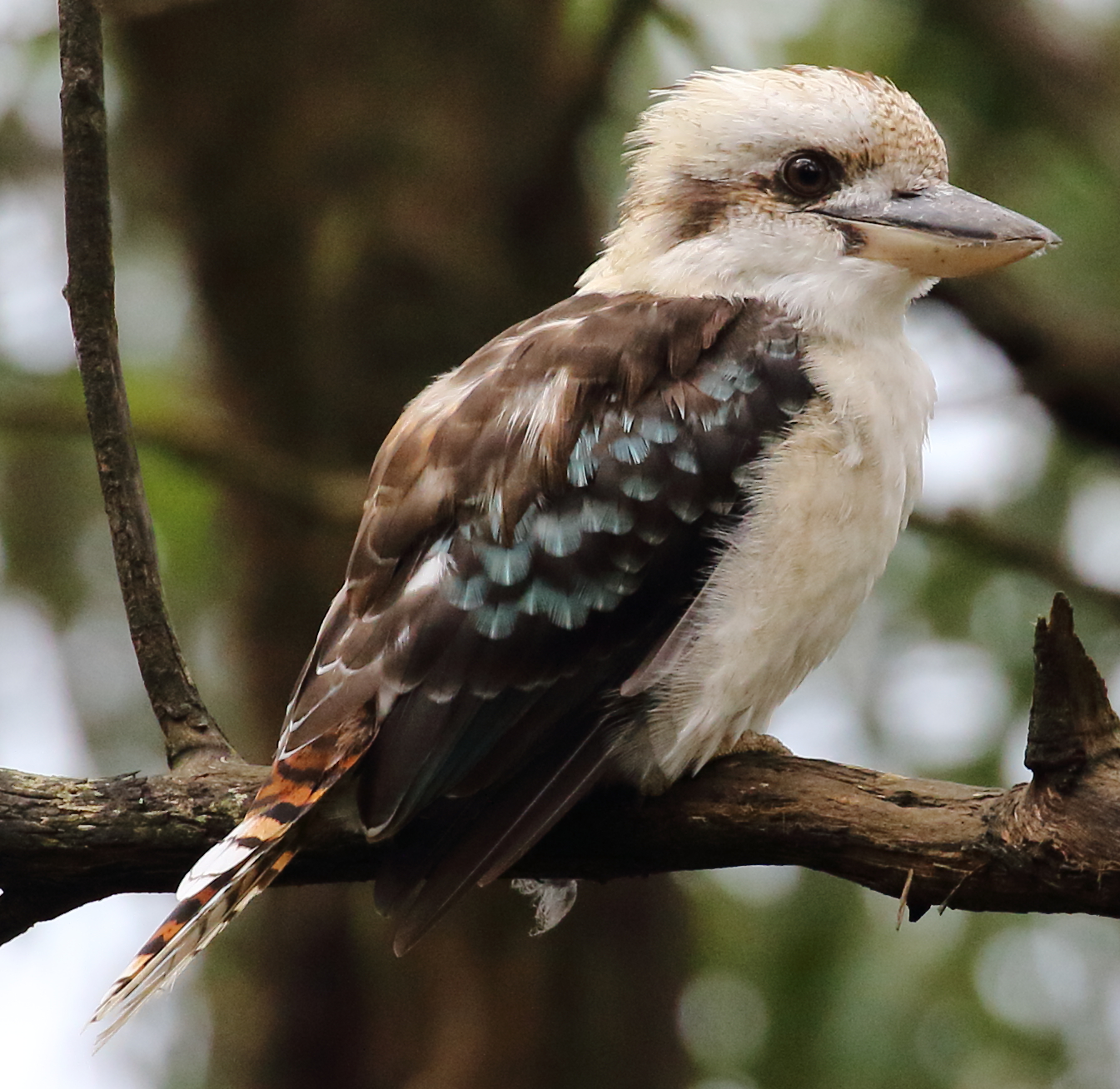
Surprise assassin: In addition to the widely known prey of snakes (including dangerously venomous species), Laughing Kookaburras also feed on lizards, frogs, worms, insects, small birds, small mammals, crustaceans and goldfish from garden ponds. Recently, on social media, astounding images emerged of a Laughing Kookaburra with a hefty Brown Hare in its bill. Small prey items are swallowed whole, while larger prey is violently thrashed against a branch or the ground. What it lacks in a raptor’s hooked bill and powerful, grasping talons with sharp claws, the Laughing Kookaburra makes up for with unrivalled tenacity and a BIG appetite! Nature’s pest control!
Habitat: occupies a diverse range of habitats, including woodland; open forests and forest clearings; wooded watercourses, including along semi-arid riverine systems; farmland; parks; gardens; and orchards.
Geographic distribution: The Laughing Kookaburra occupies the entire Victorian state; the southeast of SA; all but the extreme northwest of NSW; and the eastern two-thirds of QLD, including the entire coastline and Far North. The Laughing Kookaburra was also introduced to WA, where it inhabits the southwest; and to Tasmania, including King, and Flinders, Islands. It was also introduced to New Zealand.
Breeding: The Laughing Kookaburra nests in tree hollows, and arboreal termite mounds. More obscure nesting options may include haystacks and walls. Above all else, though, large, old, hollow-bearing trees are desirable to support breeding success. Within the chosen cavity, the nest tends to be bare and unlined. Each clutch numbers 2-4 eggs. Egg incubation is carried out by the female or both parents. ‘Helpers’, which are mature offspring from 1-2 years prior, remain in the parents’ territory to support them with raising the latest brood.
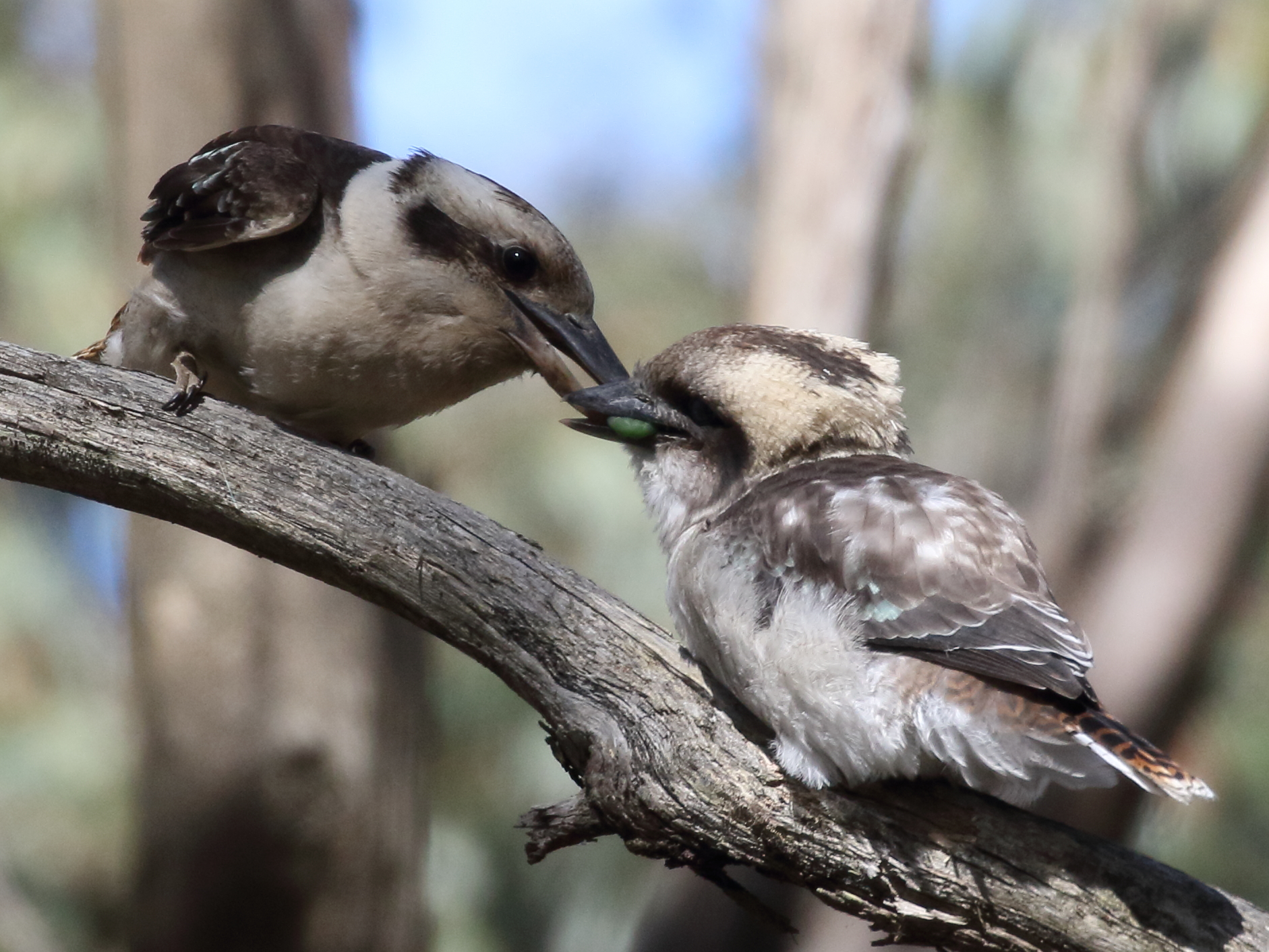
Identifying sexes, different ages: Laughing Kookaburras are largely sexually monomorphic (i.e. both sexes look the same), but breeding males will develop a blue ‘flush’ on their rump/lower back. Juveniles have a dark lower mandible/bill, whereas adults have the two-toned bill where the lower mandible is pale. Additionally, juveniles have fine, brown scalloping of the breast/upper belly.
How are Laughing Kookaburras faring? Official conservation status reads well: the entire population is listed as ‘Least Concern’ (LC), with a population trend of ‘Stable’, while in each of the states it occupies, Laughing Kookaburra is listed as ‘Secure’. However, anecdotal consensus among local birding hobbyist groups suggests Laughing Kookaburras may be in decline, particularly in suburban settings. Many agree that in said settings, Laughing Kookaburra is not quite as commonly-encountered as it was previously. Research concerned with this anecdotal consensus is emerging, and more will be needed to better understand Laughing Kookaburra population trends, threatening processes, etc. Two targeted conservation measures spring to mind: 1) better protection of large, old trees; and 2) raising awareness of the dangers posed by secondary rodenticide poisoning (i.e. when predators get poisoned from eating poisoned rodents). On that matter, homeowners would be advised to consider alternative methods of rodent control; and when poisoned rodents are found deceased, it is recommended the carcass be double-bagged and binned to minimise risk to scavengers.
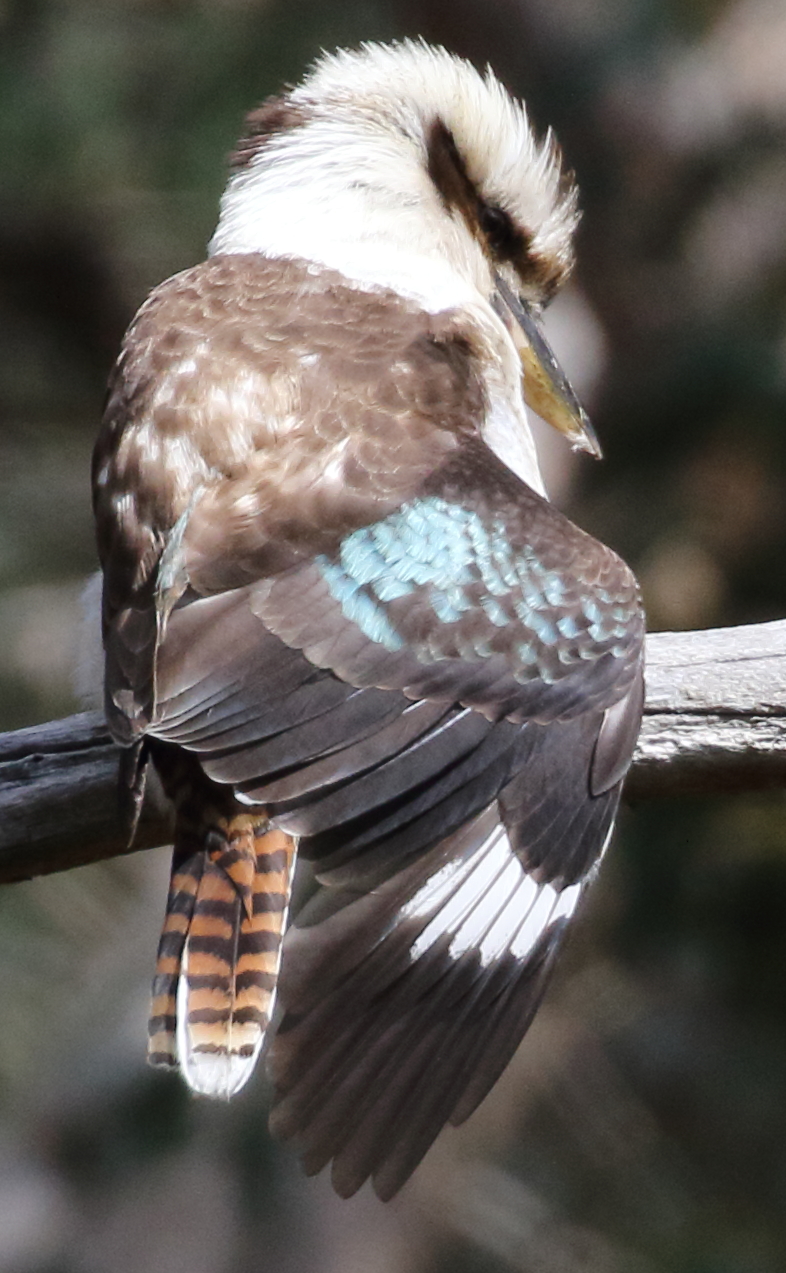
Next time you wander through Woowookarung Regional Park, or another local forest patch or farm, when you next see or hear a Laughing Kookaburra, maybe now you’ll have a deeper appreciation of the surprise packet that is the Laughing Jackass!
Author note: FoCC Committee member and co-admin of FoCC’s Facebook and webpage, Joel Ellis is the resident bird nerd, amateur Powerful Owl researcher, and editor of FoCC’s (co-funded) ‘Indigenous [Species] of Southern Ballarat’ brochure series. Joel has studied birds up to Honours degree level, interns as an ecological consultant (ornithologist), and is a member of BirdLife Australia (Ballarat branch).
- Koala sightings
October to March is Koala breeding season and peak sightings time. If you see, hear or find scat from a Koala, please send the information containing the when, where, and how to: foccinfo@gmail.com. Images are gold.


- “Koala Counter” App
CSIRO has developed a ‘Koala Counter’ App as part of the National Koala Monitoring Program (NKMP). (Note: ‘Koala Counter’ is the most current CSIRO App – not to be confused with others of similar name.) The app is available at:
https://apps.apple.com/au/app/nkmp-koalacounter/id6444713649
It has been designed to provide more information than just seeing a koala.
Part of its purpose is to find out where there are no koalas.
It asks users to describe quality of habitat and other info, using simple drop-down menus. It automatically records precise location co-ordinates. The information you provide is useful to CSIRO even when there are no koalas counted.
The App won’t be too difficult to use once the basics are mastered, and is available now, free through the App Store.
Some familiarity with it before ‘going out bush’ is recommended. It is quite straightforward to do a ‘single’ transect, and complete using the easy drop-down menus.
Total of FoCC Citizen Science Koala Count is now 300.
- Seniors Festival
The FoCC held a stall at the recent Ballarat Seniors Festival held at Alfredton Recreation Reserve.
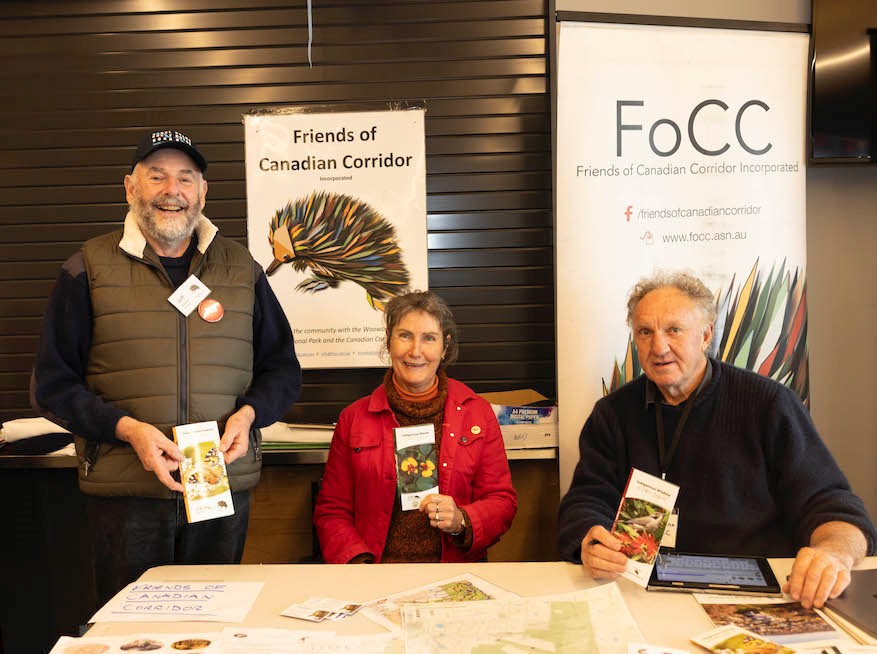
- Park works
Tree damage at the Dementia trail. Building shelters in the park seems like fun, but the effects can be around for a long time.


- Spikey
Echidna have been busy digging in the park. Particularly in the ex-plantation areas which is heartening.

- Great Australian Backyard Bird Count 16th to 22nd October 2023
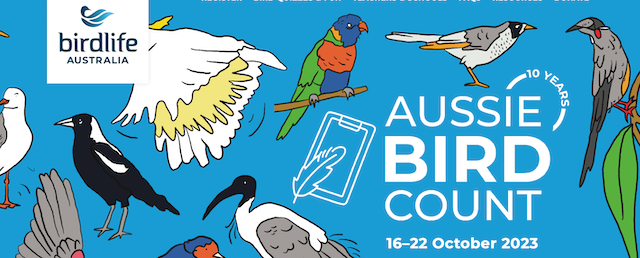
All across Ballarat many people counted the birds in Ballarat backyards. Results are not yet available.
- Snakes and lizards are out
This copperhead was quietly making its way along the edge of the footpath beside the Recreation Rd Bushland Reserve. Snakes are protected. If sighted please move away.
Other sightings have been along Dozed Rd and Wilson St.
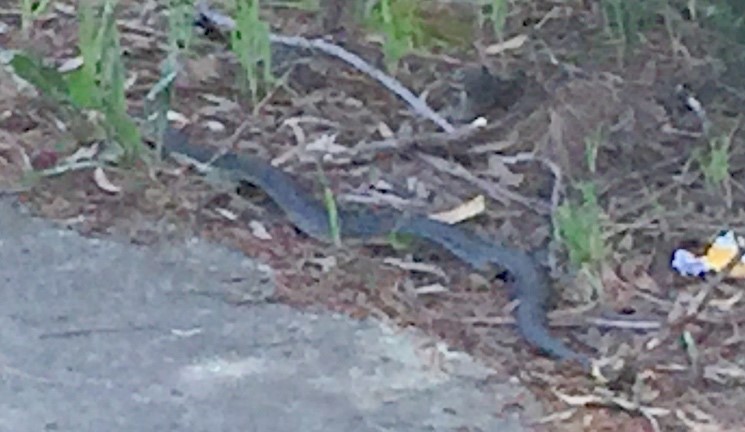

- FoCC 7th Annual General Meeting
The FoCC will hold the 7th Annual General Meeting at the Buninyong Community House, 407 Warrenheip St Buninyong at 7pm Wednesday 1st November.
The agenda will include guest speaker, annual reports and election of office bearers.
Members wishing to nominate for the FoCC committee should contact the Secretary at foccinfo@gmail.com for a nomination form.
- Rubbish dumpers, thieves and vandals
The FoCC encourages Park friends to report track vandals, rubbish dumpers, wood thieves and other suspicious activity to Parks Victoria on 13 1963 or email: woowookarung@parks.vic.gov.au
In emergency situations please call 000. If an offender is spotted, please note vehicle registration details as vehicle identification is most helpful, plus location and details.

